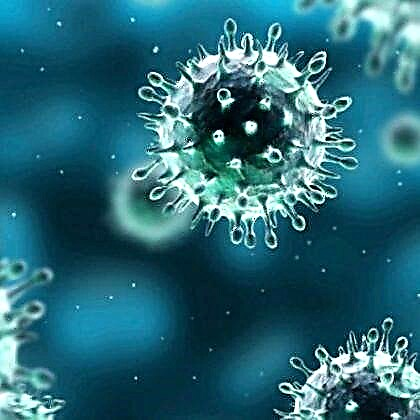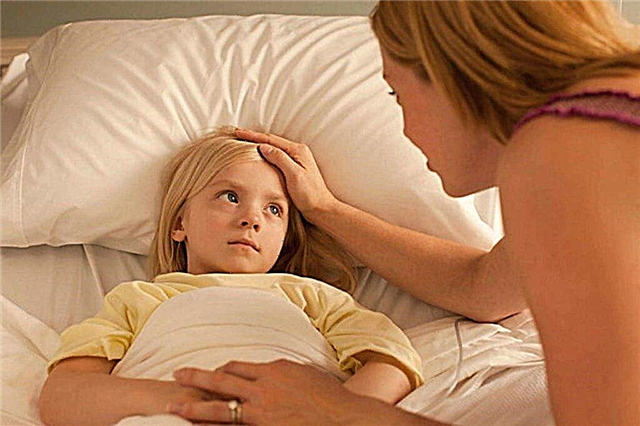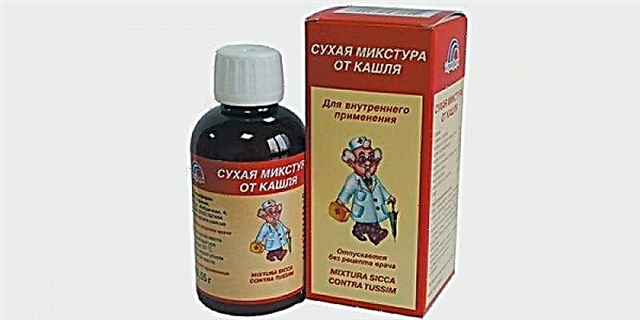Adenovirus infection in children is a common cause of respiratory illness. It can cause symptoms similar to those of the common cold, sore throat, bronchitis, pneumonia, diarrhea, and conjunctivitis. Infants and immunocompromised people are more prone to severe reactions to adenoviruses. Is there a way to identify the disease and act in time to prevent complications?
We will tell you about adenovirus infection in children, its symptoms and treatment.
Adenovirus and its properties
Adenoviruses are a category of viruses that circulate throughout the world and cause disease all year round.

Asymptomatic infections are also common. Only about a third of all known human adenovirus serotypes are associated with clinically apparent disease. Children at any age can get the infection.
Adenoviruses circulate in the environment throughout the year, but adenoviral respiratory infections are more common in late winter, spring, and early summer. Children under 5 years old are most susceptible to digestive tract infections. The vast majority of children have had at least one form of adenovirus infection before the age of 10. These viruses are common in areas with large concentrations of children, such as kindergartens, schools and summer camps.
They are highly contagious. The virus spreads when someone infected coughs or sneezes. The droplets containing the virus are thrown into the air and deposited on the surfaces of surrounding objects.
A toddler gets an adenovirus infection when he touches the hand of someone who is infected, a toy or other object belonging to the carrier of the adenovirus, and then touches his mouth, eyes or nose. The virus spreads quickly in children precisely because they often touch other people's objects and their face with their hands.
An adult can become infected when changing a diaper. A child can also get sick from eating food prepared by someone who has not washed their hands properly after using the toilet. It is possible to get the virus in water, for example, in small lakes or in a pool that is poorly cleaned, but this does not happen often.
Forms of adenovirus infection and their symptoms

Adenoviruses cause many common clinical syndromes. These syndromes are difficult to distinguish from similar diseases caused by other pathogens such as respiratory syncytial virus, human metapneumovirus, human rhinovirus (HRV), rotavirus, group A streptococcus, and other common viral and bacterial strains.
Acute respiratory illness (predominantly adenovirus types 1, 2, 4, 5 and 6, sometimes 3 and 7)
As with many other viral infections, ARIs are more common during the spring and winter months. About half of adenoviral respiratory infections do not cause symptoms. Adenoviruses account for 10% of all childhood lower respiratory tract infections.
Fever, runny nose, sore throat and cough, usually lasting 3 to 5 days, are typical symptoms of adenoviral ARI. Sore throat is caused by damage to the upper respiratory tract (pharyngitis, adenoiditis, or tonsillitis).
Lower respiratory tract infections, including tracheobronchitis, bronchiolitis, and pneumonia, can mimic respiratory syncytial viral infection or influenza. It is noteworthy that conjunctivitis in the presence of bronchitis suggests an adenoviral infection.
Fatal pneumonia is not common with adenovirus infection but is more likely in neonates and is associated with serotypes 3, 7, 14, 21, and 30.
Pharyngoconjunctival fever (predominantly serotypes 3, 4, and 7)
 This form of adenovirus infection is more common in schoolchildren. Adenovirus outbreaks occur in small groups, especially in summer camps, in an under-chlorinated water body such as a pool or lake. Transmission of infection is possible by airborne droplets or by contact, in contact with secretions from the eyes of a sick person during the acute period of the disease.
This form of adenovirus infection is more common in schoolchildren. Adenovirus outbreaks occur in small groups, especially in summer camps, in an under-chlorinated water body such as a pool or lake. Transmission of infection is possible by airborne droplets or by contact, in contact with secretions from the eyes of a sick person during the acute period of the disease.
The classic onset is characterized by fever, sore throat, runny nose, and redness of the conjunctiva. Upper respiratory symptoms may precede ocular manifestations or may be absent.
Acute conjunctivitis can occur with or without pharyngitis. Encephalitis can occur but is rare.
Conjunctivitis usually begins in one eye and then spreads to the other, although both eyes can be affected at the same time. Severe pain is atypical, with mild soreness or discomfort, itching, and morning crust pus.
Usually a viral disease is limited to 10-14 days (the incubation period is 5 days).
Rarely, a rash or diarrhea may occur.
Epidemic keratoconjunctivitis (predominantly serotypes 8, 19, and 37)
After an 8-day incubation period, unilateral redness of the eye occurs, gradually spreading to the second organ of vision. The patient develops photophobia and pain, indicating involvement in the pathological process of the cornea. Children may develop fever and lymphadenopathy (swollen lymph nodes). Malaise and headache are also observed.
The inflammation can persist for a week, and sometimes residual scars and visual disturbances develop.
Acute hemorrhagic cystitis (serotypes 11 and 21) or nephritis
Acute hemorrhagic cystitis usually affects children aged 5-15 years. Boys are affected more often than girls.
Frequent urination with blood is observed. Hematuria (blood in the urine) goes away on its own after 3 days, and other symptoms resolve later.
Gastroenteritis (most commonly associated with serotypes 40 and 41)
Adenovirus infection is a common cause of childhood diarrhea, but it is less common than rotavirus infection and, in some cases, less common than astrovirus infection.
Adenoviruses multiply readily in the human intestine and can be detected in asymptomatic carriers. Thus, their detection in the setting of diarrheal syndrome may be accidental.
High body temperature and watery diarrhea associated with adenovirus infection in children are usually limited to 1 to 2 weeks.
Features of adenovirus infection in children
This type of infection is more common in children. Usually, by the age of 5-7 years, the child has established immunity, and he will be less at risk of contracting an adenovirus, and in case of infection, the body's defenses will be significantly weakened. The clinical picture is similar in children and adults. But in babies, the disease manifests itself most often more acutely, brightly and persistently, there is a tendency to complications. Intoxication is initially characterized by lack of appetite, lethargy, drowsiness.

The temperature in childhood patients is usually no higher than 39 ° C and lasts about 3 - 5 days, gradually turning into subfebrile (up to 38 ° C). Nasal congestion develops with the gradual transformation of mucous secretions into purulent, with a green tint. Characterized by redness of the palatine arches, enlargement of the tonsils with a white coating, which is easily removed with a spatula during examination.
Cough worries the child from the onset of the disease. Initially dry, it gradually turns into moist with massive expectoration. Bronchitis in children is the most common complication of this infection.
Adenoviral conjunctivitis develops, starting with complaints of itching in the eyes, lacrimation, burning. Objectively (on examination) conjunctivitis is manifested by the accumulation of mucous discharge in the inner corners of the eyes.
On the part of the intestines, children more often show signs of dysfunction in the form of loose stools with no change in color and mucus, with an admixture of blood, with the appearance of pain in the navel. When the child is examined, enlargement of the lymph nodes available for palpation in the neck area, as well as an increase in the spleen and liver, is also found.
Acute adenovirus infection is extremely rare, but it can occur in newborns and children up to six months of age, in the absence of immunity to this infection in the mother. As a rule, this group of children often suffers from the addition of secondary infections of bacterial genesis with the development of bronchitis and pneumonia.
It is also possible to infect the fetus in utero if the mother is sick, which also damages the baby's respiratory system, leading to a long course of the disease after birth. In this case, the infection often spreads to other organs and tissues with their subsequent damage.
The disease can be mild, moderate or severe. The latter is basically a collection of all types of complications. However, the percentage of severe forms among all forms of adenovirus infection is small.
The prognosis in children with adenovirus infection is more likely to be favorable. The child's recovery occurs on average 7-10 days after the onset of the disease.
Diagnostics

Adenovirus can be suspected as an etiology of the disease based on clinical signs. True, this is not enough for an accurate diagnosis of the disease.
Tissue samples from the affected organ usually have the highest diagnostic utility. Airway secretions, nasopharyngeal swabs are useful in diagnosing respiratory and pharyngeal infections. Conjunctival tests will be investigated for conjunctivitis. Detection of the virus in stool can be useful for epidemiological research, but is often positive for several months after an acute infection due to an asymptomatic course.
In immunocompromised patients, abnormal tissue specimens are very useful in documenting the cause of hepatitis or colitis so that the virus can be identified. Bronchoscopic specimens will be investigated in cases of pneumonia in immunocompromised patients.
General culture methods are very sensitive and have traditionally been the gold standard for the detection of adenovirus. However, cultures must be stored for a long time to achieve full sensitivity.
Quantitative PCR is now commercially available for measuring blood adenoviral loads. Such testing can also be performed using other body fluids, but standardizing such testing is problematic and interpretation of results can be difficult.
The enzyme immunoassay is available and fast, but less sensitive than culture.
In the general analysis of blood, as a rule, only a slightly increased erythrocyte sedimentation rate is observed, and the rest of the indicators remain normal.
It is necessary to conduct a very careful differential diagnosis of adenovirus from other diseases using research methods, since a strong similarity in the manifestations of symptoms has already been reported. This infection should be distinguished from influenza, pneumonia and bronchitis of bacterial origin, as well as from conjunctivitis, tuberculosis, infectious mononucleosis, intestinal infections, appendicitis, and other surgical pathologies.
Complications
Adenoviral pneumonia can lead to respiratory failure requiring mechanical ventilation, especially in an immunocompromised patient. Secondary bacterial pneumonia is not as common after adenovirus infection as it is after influenza, but data on this problem are limited.
Epidemic keratoconjunctivitis (inflammation of the conjunctiva and cornea of the eye) is a severe form of adenoviral infection.
A severe complication of intestinal adenovirus is intestinal intussusception. This is a condition in which one part of the intestine slides over another and the intestine folds like a telescope. This is a medical emergency and is more common in infants.
Treatment. General principles
- Supportive care is the mainstay of treatment for adenovirus.
- Patients with severe conjunctivitis should be referred for an ophthalmologic consultation.
- No specific antiviral therapy has been proven to provide definite clinical benefit for infection.
- Since there is no specific treatment for viruses, severe illnesses are managed by treating symptoms and preventing complications of the infection. Deaths are extremely rare.

How to treat children with adenovirus infection?
- One of the main medicines for the treatment of adenovirus is an antiviral drug (Arbidol, Anaferon, Genferon), which actively fights against the development and reproduction of the virus in the child's body.
Always remember that the sooner they are assigned, the faster and more effective the healing and recovery process will be.
- Diet plays a critical role in gastrointestinal disorders. A soft diet is recommended.
Give your child plenty of fluids to fight dehydration: soups, juices, broths. Avoid milk.
- The doctor will prescribe saline drops and vasoconstrictor drugs for adenovirus infection in children, in order to relieve nasal congestion. These medications help to effectively manage the common cold.
Home remedies include turmeric in milk, ginger tea, garlic, basil tea, and steam inhalation.
- Antiemetics can be used in cases of severe nausea, vomiting.
- Sometimes pain relievers can be prescribed.
- The eye drops are effective in relieving itchy eyes. They quickly stop lacrimation.
- Urinary infections can be controlled by drinking plenty of water with added cranberries. Cranberries help relieve symptoms and prevent disease progression.
- The use of antibiotics should only be considered by a physician. They are used in case of complications in the form of bronchitis, pneumonia, otitis media with suspected bacterial infection.
Prompt onset of symptomatic treatment is essential to prevent complications.
Prevention
Now, in some countries, a live vaccine containing an attenuated virus is used to prevent the spread and infection of the adenovirus. However, it was not widespread due to the data obtained on the ability to influence the formation of various malignant neoplasms in the human body.
- among the general preventive measures, one can mention the treatment of surfaces of surrounding objects in public institutions, hospitals, using disinfectants, chlorination of water in swimming pools, ventilation of premises;
- when a patient with adenovirus infection is identified in the children's team, it is necessary to ensure the isolation of the sick child during the illness;
- in cases of epidemic outbreaks, it is recommended to introduce quarantine to prevent the spread of the infection further;
- personal prevention is to wear clothes according to the weather; when announcing an upcoming epidemic, when in a group with an identified adenovirus infection, it is recommended to use prophylactic immunostimulating drugs, use preventive doses of antiviral drugs;
- at home, you also need to treat toys, furniture surfaces with a weak chlorine solution or other disinfectant;
- if contact with a sick adenovirus is detected, it is necessary to observe the child with the measurement of body temperature, for 3 to 4 days;
- you should limit visits to government offices, supermarkets and other places with a large crowd of people during the period of the spread of viral diseases.



